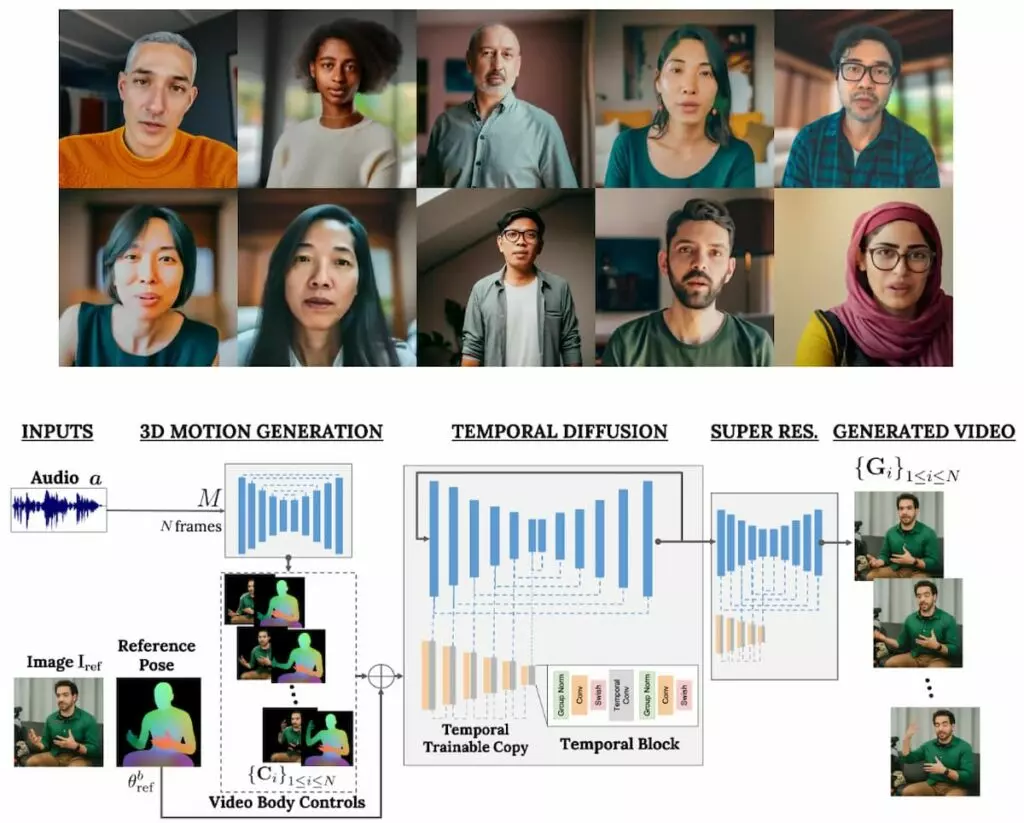Google is once again positioning itself in the world of Artificial Intelligence with an algorithm that promises to revolutionize the way we conceive of videos and digital interaction. This is VLOGGER, an AI model that emerges from meticulous research work and has the potential to drastically change both entertainment and personal communication. But what exactly does VLOGGER do, and why does it generate so much interest?
SEE ASLO:
- How to tell if a news story is fake on the Internet
- 3 Online Tools to Help You Overcome Stressful Times

Create videos of anyone with a photo.
The team behind VLOGGER, made up of six leading researchers from the big G, came up with an algorithm capable of transforming a static photograph into a dynamic and realistic video of a person talking. The essence of this advance lies in its simplicity: to generate this video, the user only needs to provide an image of the person and the text they want them to “narrate”. The result, although imperfect, has a surprising quality. Capable of fooling anyone who doesn’t pay enough attention, especially on social media platforms.
The operation of VLOGGER focuses on the creation of “talking heads“, where the angles of the camera and the pose of the subject are kept constant. Meanwhile, artificial intelligence is responsible for animating facial expressions, head and hand movements with a certain natural fluidity. What sets VLOGGER apart from other similar technologies isn’t just its ability to generate these videos from a simple photo. But the database on which he trained: the MENTOR project, a compilation of 800,000 videos of people talking, all compiled by Google.
The practical application of this technology promises a broad and diverse spectrum. From the ability to animate photorealistic avatars for text conversations to the creation of newscasts or personal digital assistants. Certainly, the scope of this algorithm seems limitless. Sectors such as entertainment, content creation, and video games, eager for new forms of human synthesis, could benefit greatly from this technology.
Ambivalent technology
The researchers also envision potential applications in the field of education and virtual medical consultation. Imagine, for example, an AI-animated online health system, which could generate the image of a doctor for online consultations. This ability to personalize and humanize digital interactions could significantly transform the user experience across multiple platforms and services.
Inherently, all AI-related innovations often come with a set of ethical dilemmas and security challenges. Although VLOGGER promises a potentially revolutionary tool, it also raises significant concerns related to the creation of fake videos. The possibility of generating realistic content of anyone speaking, even replicating their voice, opens the door to malicious uses, from disinformation to media manipulation.
Aware of these risks, VLOGGER’s technology remains closed to the public. The importance of putting robust safeguards and verification measures in place before widespread implementation is vital to avoid harmful consequences. Although the publication does not detail specific measures against misuse, the technology community must measure the negative implications.



Comments